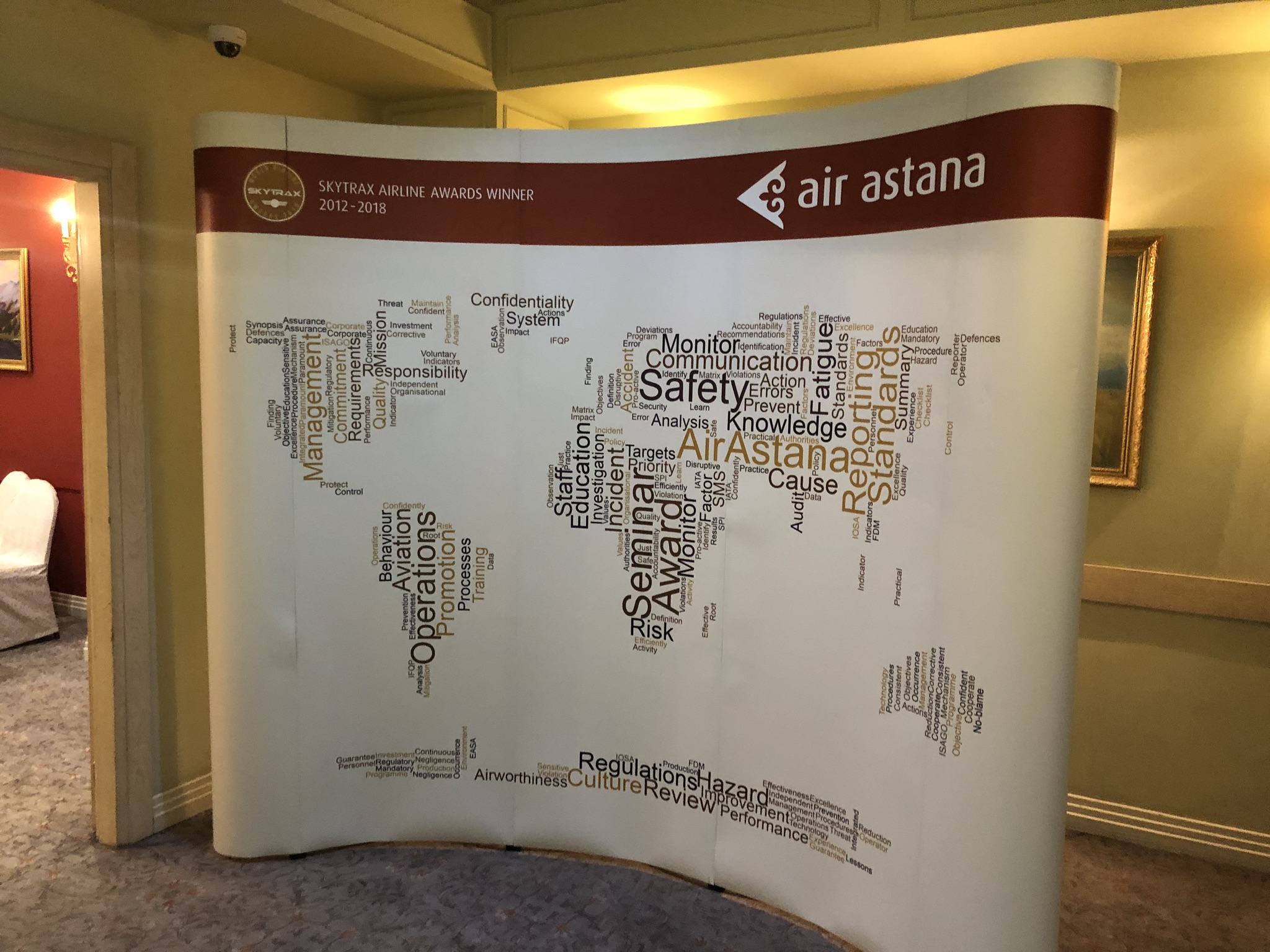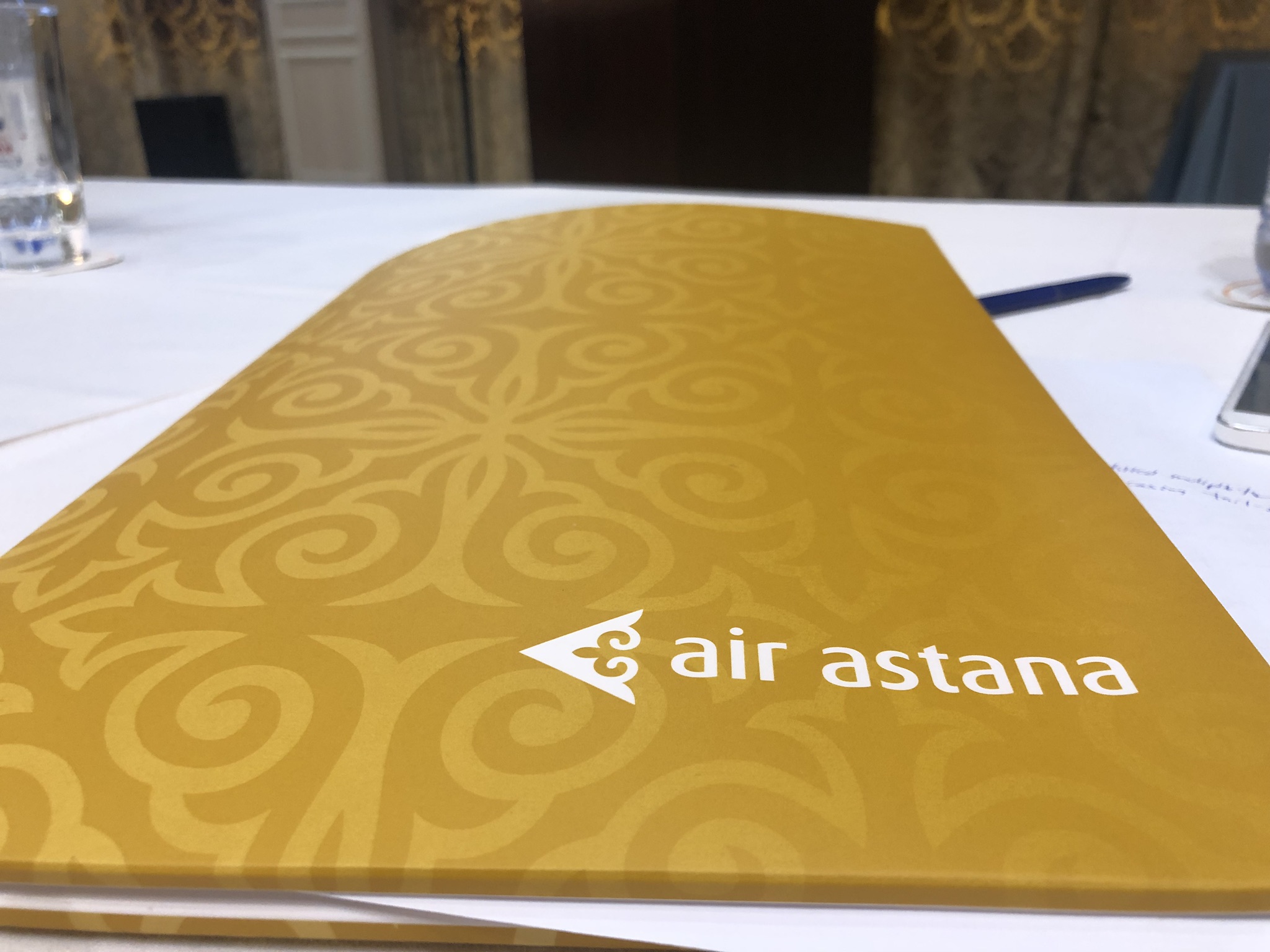ALMATY, KAZAKHSTAN – 23 September 2019. One of the most prominent safety summits in central Asian region is back and has brought us interesting topics in aviation safety and an insight into safety of one of the biggest airlines in that region, Air Astana, who are also the hosts of the event.
Republic of Kazakhstan is known of it’s immense reserves of gas and oil and is regarded one of the richest country, yet the country is perceived as a third-world country and when asked about to fly with one of it’s airlines, most outsider people would reluctantly consider that prospect.
However, the situation seems brighter than publicised, as aviation is one of the strongest areas in this country stricken by, let’s say, less favourable image.
Today and tomorrow, we are in Almaty, the biggest city in Kazakhstan (capital is Nur-Sultan or formerly known as Astana) where the 5th Regional Safety Summit is being held.

Let’s go chronologically:
The summit has been opened by ever present Aglanbek Sarmukanov, Safety promotion manager at Air Astana who gave a warm welcome to attendees.
The introduction presentation was made by IATA member, Tatiana Aleksandrova who highlighted aviation safety in 2018 with statistics and it’s Six-Point Safety Strategy. The Six Point Safety Strategy is IATA’s comprehensive approach to identify organizational, operational and emerging safety issues. It consists of :
1. Reduce Operational Risk,
2. Enhance Quality and Compliance,
3. Advocate for Improved Aviation Infrastructure,
4. Support Consistent Implementation of Safety Management System ,
5. Support Effective Recruitment and Training ,
6. Identify and Address Emerging Safety Issues.
Afterwards we followed by Air Astana safety presentation that was presented by charismatic Gerhard Coetzee, Sr. Vice President Corporate Safety Compliance at Air Astana. He demonstrated the values Air Astana is trying to achieve in the airline with unusual partnership of, how he called it, Safety Partners – Trust & Risk.
FATIGUE RISK MANAGEMENT
Afternoon presentations were overcast by two interesting presentations by Dr. Eleonora Surina and immediately afterwards by another doctor Bjorn Henning, who both had touched the topic of FRMS (Fatigue Risk Management System). Dr. Surina explained that she and her team performed numerous experiments on flight crew measuring their capabilities during flights. They checked pilots type of reactions, flexibility and alertness therefore creating pilot’s “handwriting” or basically his style of flying. This interesting information has been put into a set of data which consisted of Fatigue reports, FDM data, Biomathematical model, Control of pilot’s sleep cycles using wearables, questionnaires about their alertness. This model could predict the fatigue levels and help with pairing flight crew for future flights.
On the other hand, dr. Henning demonstrated almost the same thing which has been initiated by IATA that consists of developing a web software that takes into consideration 3 measures:
- Theoretical calculations (biomathematical model that could calculate the level of fatigue)
- Subjective (surveys – Samn-Parelli scale, reports)
- Objective (PVT tests, Actigraphy watches – direct, FDM – indirect)
IATA’s idea is that each airline has it’s own Fatigue Information Repository (FIR) where they store fatigue data by it’s crew members and exchange that data to global repository named Fatigue Data Exchange Repository.

BOEING BUYING 80% OF EMBRAER
Next on stage was Mr. Luis Savio Dos Santos, Air Safety manager from Embraer who announced that American company Boeing has purchased the Brazilian company for 80% shares of commercial aviation business and merged Embraer to it’s newly founded company – Boeing Brasil Commercial (BBC). However, Embraer will still exist as a company focused on executive aviation, defense & security and other hi-tech markets. He also demonstrated the internal procedures to assess safety risks inside Embraer and their well-developed system n achieving operational safety.
DISRUPTIVE PASSENGERS
For the end of the first day at Almaty we had an interesting presentation by Ainura Mussylmankulova who is a Senior Instructor at Cabin Training Division in Air Astana. She showed us a training video where the flight attendant tries to wake up a passenger in order for him to buckle up because of turbulence. However, he reacts very aggressively and abuses the flight attendant. What to do in this situation?
Air Astana are trying to train their flight attendants that most of passengers behaviors can be predicated and prevented.
They have formed 6 root causes for disruptive passengers:
- aerophobia
- claustophobia
- proximity (close-set seats, invading personal space)
- restrictions (frustrations on check-ins, long security checks, passport control etc.)
- long flight
- personal problems
- intoxicated
Tomorrow we continue with more interesting presentations.







